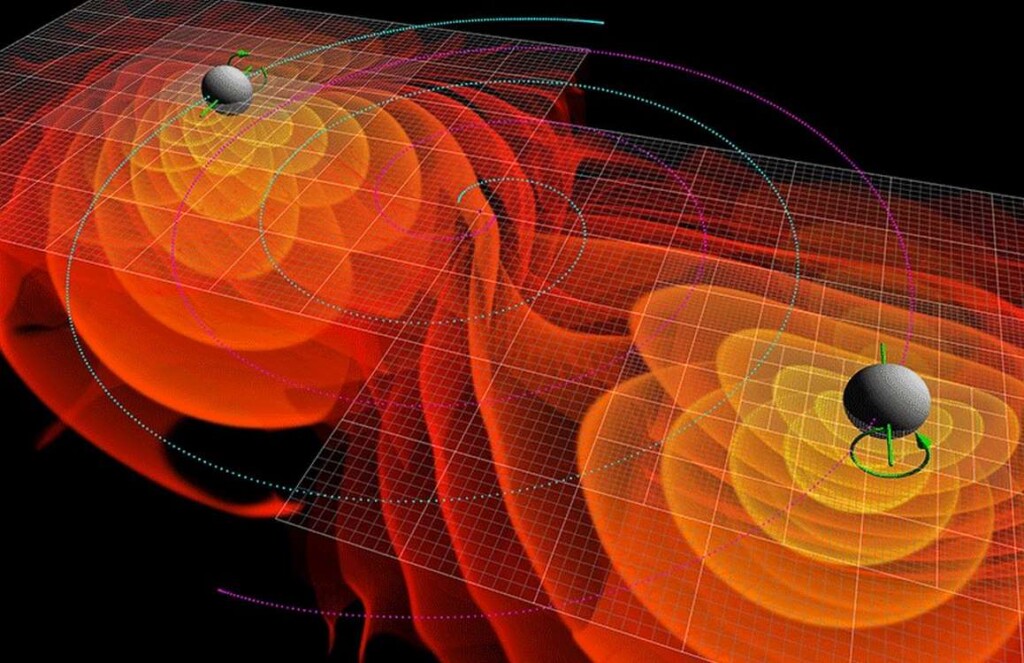
A collaboration between humanity’s three gravitational wave detectors have identified a black hole merger event that created something 225-times the size of our Sun.
It’s the largest such event ever detected in the history of gravitational wave astronomy, and pushed the limits of the discipline and what it can teach us to the highest degrees.
In 2015, history was made when the LIGO observatories in Livingston, Louisiana, and Hanford, Washington, detected a ripple in the fabric of space time cause by a black hole approximately 65-times the mass of the Sun.
Since then, LIGO has teamed up with the gravitational wave detectors Virgo in Pisa, Italy, and KAGRA, in Japan. Together they form the LVK collaboration, and have greatly expanded the capabilities of detecting these phenomena.
Using practically the entire Northern Hemisphere as a capture area, LVK during its most recent observations detected over 200 individual gravitational waves, but one labeled GW231123, named for its detection date on November 2023, blew all the rest away.
At between 2 and 13 billion light years from Earth, it was a literal universe shaking event. GW231123 marked the collision and merger of two rapidly spinning black holes, one measuring 103 solar masses, and the other 137 solar masses. Each was spinning 400,000 times the rotational speed of the Earth.
The high mass and extremely rapid spinning of the black holes push the limits of both gravitational-wave detection technology and current theoretical models.
“The black holes appear to be spinning very rapidly—near the limit allowed by Einstein’s theory of general relativity,” explains Charlie Hoy of the University of Portsmouth and a member of the LVK. “That makes the signal difficult to model and interpret. It’s an excellent case study for pushing forward the development of our theoretical tools.”
OTHER DEEP SPACE BANGS: Researchers Discover a New Type of Fast and Furious Cosmic Explosion–Name it After Liverpool Soccer Team
Scientists speaking with the media said it will take years before the event is fully understood, but the working hypothesis is that the two black holes in this merger may have come to exist through their own mergers of smaller black holes in the more distant past.
“This is the most massive black hole binary we’ve observed through gravitational waves, and it presents a real challenge to our understanding of black hole formation,” says Mark Hannam of Cardiff University and a member of the LVK Collaboration. “Black holes this massive are forbidden through standard stellar evolution models. One possibility is that the two black holes in this binary formed through earlier mergers of smaller black holes.”
MORE STORIES LIKE THIS: NASA Visualizes What it Would Be Like to Plunge into a Black Hole – WATCH
Collaboration researchers are continuing to refine their analysis and improve the models used to interpret such extreme events.
“It will take years for the community to fully unravel this intricate signal pattern and all its implications,” says Gregorio Carullo of the University of Birmingham and a member of the LVK. “Despite the most likely explanation remaining a black hole merger, more complex scenarios could be the key to deciphering its unexpected features. Exciting times ahead!”
SHARE This Big Wave Surfing Through The Universe On Social Media…
